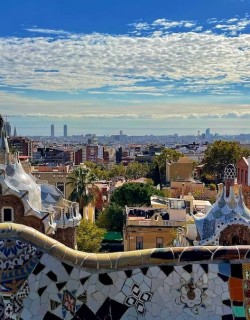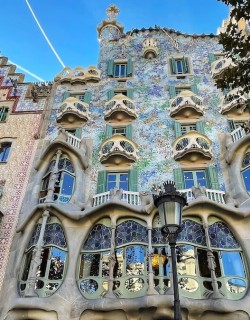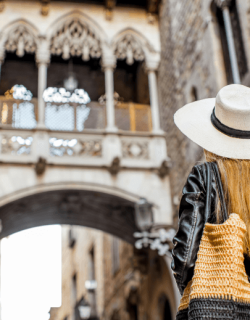Barcelona is one of Europe's most enduringly fascinating cities, an enticing mix of high culture and vibrant street life, fabulous food and artistic masterpieces. No visit to the Catalan capital is complete without a visit to the mind-blowing Sagrada Familia, the show-stopping masterpiece of Antoni Gaudí's glittering career and a true Catalan icon. To celebrate the launch of our Barcelona in a Day tour , this week on our blog we're counting down 10 things you need to know about the Sagrada Familia. Read on to get the lowdown on this awe-inspiring building!
1. The Sagrada Familia is Antoni Gaudí's masterpiece
 Visible from all over town, the immense Sagrada Familia is synonymous with the city of Barcelona and the unique architectural genius of its visionary creator, Antoni Gaudí. Gaudí is one of the 20th-century's most important architects, and his extraordinarily sculptural architectural visions are unique in the world. The Sagrada Familia is Gaudí's magnum opus, an awe-inspiring confection of countless turrets and sculpture-encrusted facades with a magical interior that seems to transport you to an impossible enchanted forest.
Visible from all over town, the immense Sagrada Familia is synonymous with the city of Barcelona and the unique architectural genius of its visionary creator, Antoni Gaudí. Gaudí is one of the 20th-century's most important architects, and his extraordinarily sculptural architectural visions are unique in the world. The Sagrada Familia is Gaudí's magnum opus, an awe-inspiring confection of countless turrets and sculpture-encrusted facades with a magical interior that seems to transport you to an impossible enchanted forest.
The church's strangely undulating, honeycomb stonework positively pulses with life, and the spectacular light-effects within the basilica have to be experienced in person to be believed. The Sagrada Familia exemplifies Barcelona's art-nouveau movement at its very best.
2. It's Been Under Construction for Over a Century
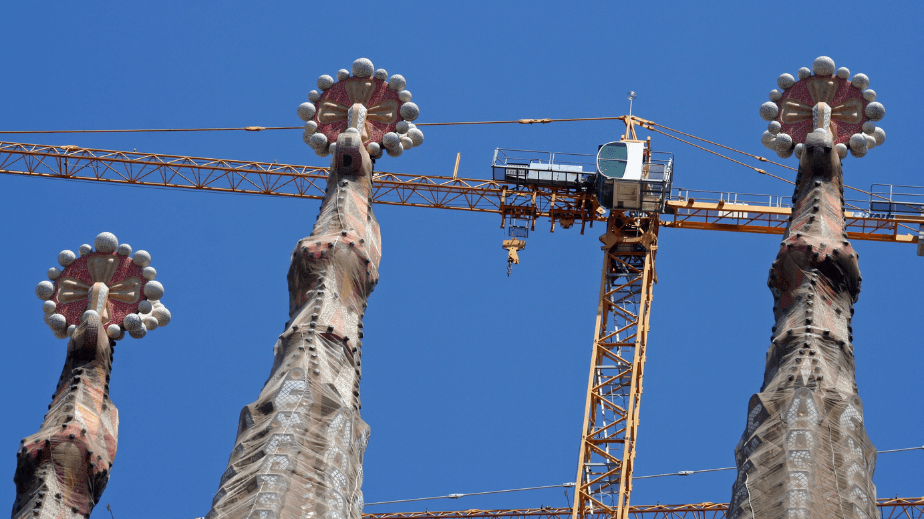 Gaudí's involvement in the Sagrada Familia began in 1883, when he took charge of the project from the original architect Francesc de Paula del Villar. He soon threw out Villar's plans, coming up with something far grander, far more ambitious, and more reflective of Barcelona's status as one of the most important artistic centers in late 19th-century Europe. Gaudí would devote more and more time to the massive undertaking as his career progressed, and by the time the architect died in 1926 he had devoted the final 20 years of his life almost exclusively to the Sagrada Familia.
Gaudí's involvement in the Sagrada Familia began in 1883, when he took charge of the project from the original architect Francesc de Paula del Villar. He soon threw out Villar's plans, coming up with something far grander, far more ambitious, and more reflective of Barcelona's status as one of the most important artistic centers in late 19th-century Europe. Gaudí would devote more and more time to the massive undertaking as his career progressed, and by the time the architect died in 1926 he had devoted the final 20 years of his life almost exclusively to the Sagrada Familia.
Taking inspiration from the master masons of Europe's great medieval cathedrals, who could never hope to see their extraordinary works completed, Gaudí was sanguine about the church's eye-watering timeframe, wryly noting that 'the patron of this project is not in a hurry.' No fewer than seven more architects have taken the reigns since Gaudí's passing, each striving to remain true to the vision of the Catalan genius. 'Gaudí left us the path,' states current head architect Jordi Fauli. 'Sometimes, though, we've had to work hard to find it.' But they are making progress; almost 140 years after ground was broken at the Sagrada Familia, the finish line is in sight. It is hoped that most of the remaining work will be completed by 2026, in time for the centenary of Gaudí's death.
3. Gaudí is Buried in the Crypt
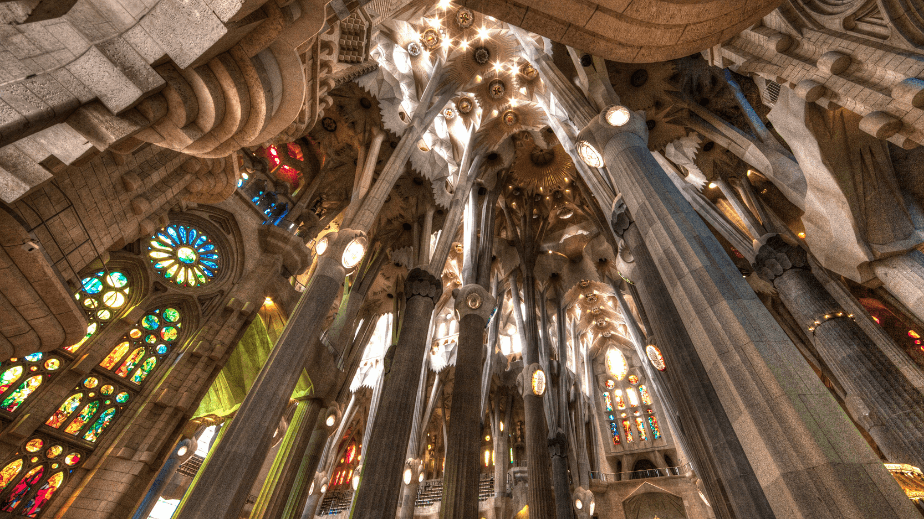
Gaudí met a tragic and premature end after being hit by a tram on the evening of the 7th of June 1926 as he headed from the building site of the Sagrada Familia to the church of San Felipe Neri across town to attend confession, as was his habitual evening custom. Shabbily dressed and gaunt looking, Gaudí was at first not recognized by the passersby that came to his aid di lui or even when he arrived at hospital, and it was only when his friend di lui Mossen Gil Pares came looking for him that the great architect was identified.
Gaudí's injuries meant that he was beyond help, and he died in the hospital of Santa Cruz three days later. Special papal permission was granted to bury the architect in the crypt of the still-unconsecrated Sagrada Familia, and after a funeral procession that snaked through the streets of Barcelona, Gaudí was laid to rest beneath his unfinished masterpiece by him. He remains there to this day.
4. The basilica has three facades, but only one was designed by Gaudí himself
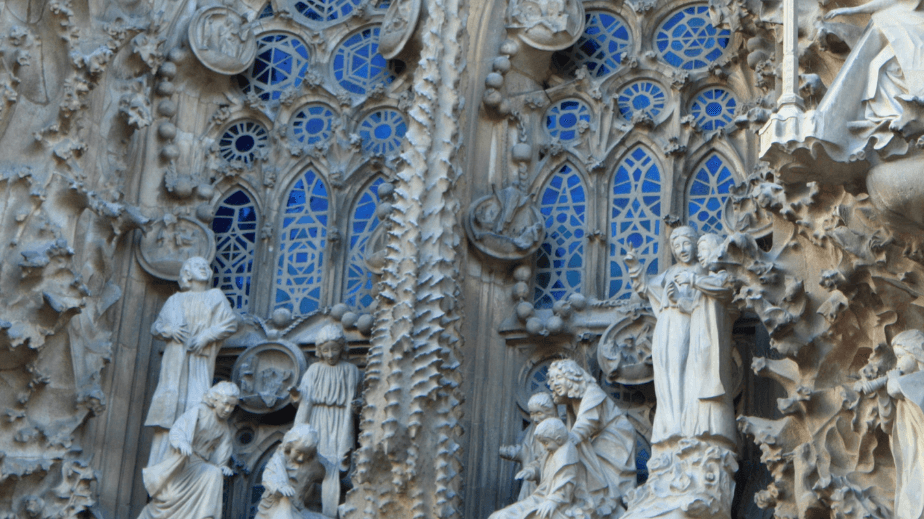
In Gaudí's design, the church was to have three facades, each devoted to a different period in the life of Christ: the eastern Nativity facade, the western Passion facade and the southern Glory facade. The Nativity facade was largely completed under Gaudí's direct supervision before his death, and bears the distinctive first-hand imprimatur of the architect. The nativity story, as you're probably aware, recounts the birth of Christ, and in Gaudí's architecturally rendered life of Christ it made sense to start here.
The facade faces the rising sun, denoting the theme of new life. Reliefs depicting the most important moments in the Nativity tale feature, including depictions of the Annunciation, the Visitation, the Adoration of the Magi and the Rest on the Flight to Egypt. Between the narrative scenes, an extraordinary superabundance of flora and fauna fills every inch of available space, combining to form the Sagrada Familia's uniquely distinctive 'molten lava' appearance.
5. The symbolism of the Sagrada Familia is extremely complex

Sprawling and eccentric, it might seem that the Sagrada Familia is a random hodge-podge of shapes and images, thrown together with little rhyme or reason. In reality, nothing could be further from the truth. Gaudí considered architecture to be a highly potent symbolic language capable of representing profound spiritual concepts, and every detail at the Sagrada Familia must be seen in light of this founding principle.
The Nativity facade evokes the wonder and joy of Christ's birth through a focus on organic elements that bring to mind the superabundance and fertility of the natural world. The west-facing Passion facade, on the other hand, reflects the death of Christ through its facing of the setting sun and its spare, unadorned facade.
At its most general, the massive Sagrada Familia reflects the endless variety and complexity of God's creation via its dizzying displays of sculptural and spatial virtuosity, a virtual biblical story in stone that is without question the most ambitious and detailed work of Christian architecture of the last 100 years.
6. The basilica will have 18 towers when finished
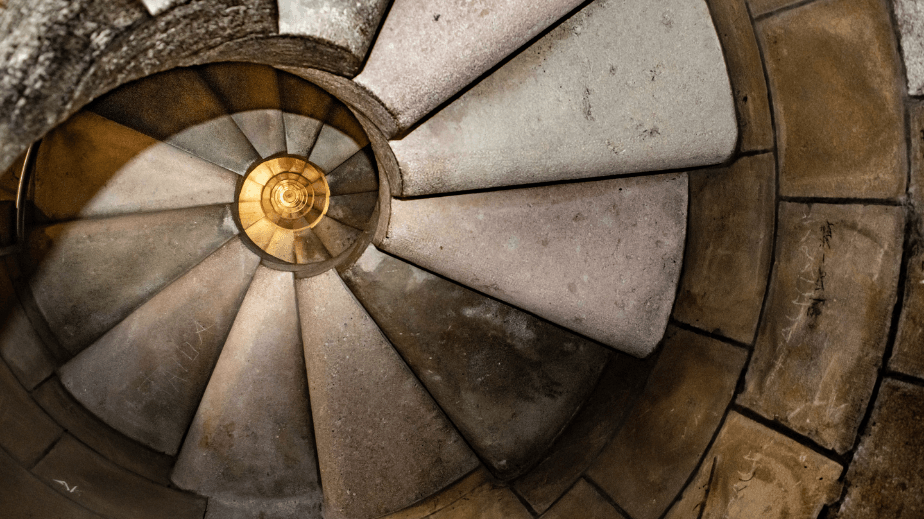
The first thing you notice about the Sagrada Familia are its towers. In Gaudí's original design, no fewer than 18 towers are intended to soar heavenwards, massive stalagmites piercing the sky. 12 of the towers are or will be dedicated to the apostles, recognizable by statues of the disciple in question. Eight of these are now complete, four on each of the Nativity and Passion facades including the oldest of the towers dedicated to Saint Barnabas, which was finished during Gaudí's lifetime.
You can head up the finished towers via an elevator (recently re-opened in April 2022 after Covid enforced closures) on each of the facades for great views of Barcelona as well as getting an up-close look at the dizzying encrustations of sculptures that give the facades their distinctive appearance. To descend, you'll make your way down a spiral staircase.
Four further towers, yet to be built, are to be dedicated to the evangelists, and will mark the corners of the crossing of the basilica. Finally, between these will rise two further towers - the 125 feet-high Tower of Maria, which was completed in 2021, and the soaring Tower of Jesus Christ, which will make the Sagrada Familia the tallest building in Barcelona when it is finished.
7. The Sagrada Familia will be the tallest church in the world
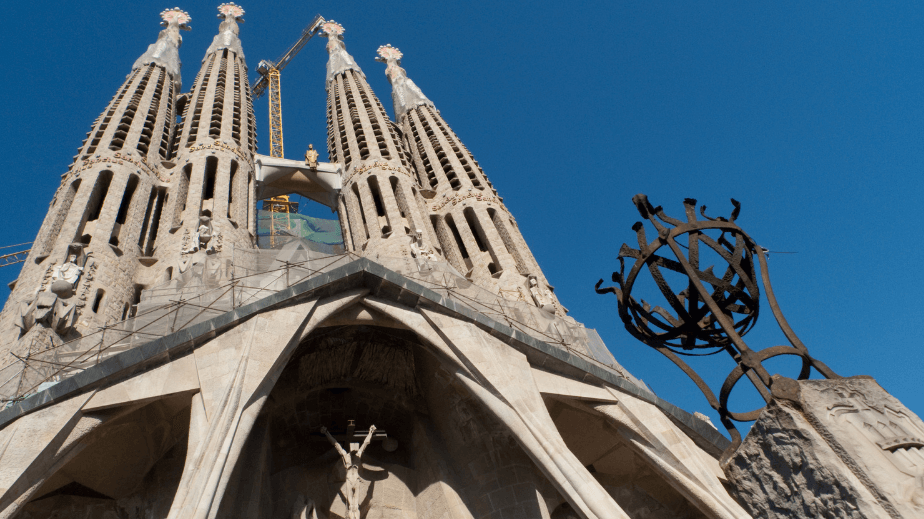
Of the towers that have yet to be completed, the most important and daunting of all will be the tower of Jesus Christ, projected to measure fully 172.5 meters tall when finished. This would make the Sagrada Familia Barcelona's highest building and the tallest church in the world (by way of comparison, Rome's St. Peter's basilica measures up at a comparatively paltry 136 metres).
Visitors will be able to take a trip to the very top of the vertiginous tower, fulfilling Gaudí's wish that the basilica could quite literally bring people closer to God. But not too close. Unwilling to pit his creation against the majesties of the natural world, Gaudí reportedly made sure that the Jesus Christ tower would not soar higher than the nearby Montjuic hill - man's ingenuity will not compete with that of the divine creator of nature itself.
8. La Sagrada Familia is a UNESCO World Heritage Site
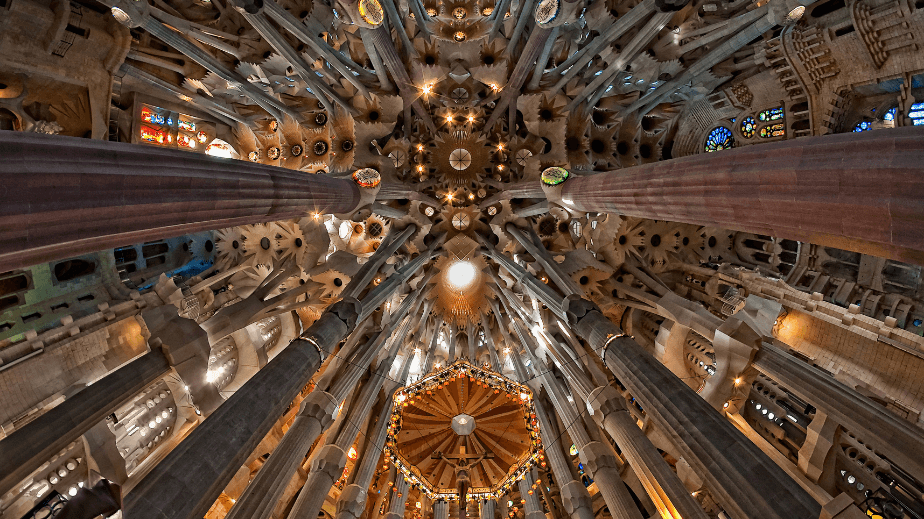 No fewer than seven of Gaudí's buildings have been recognized as important sites of world heritage by UNESCO, and the sprawling Sagrada Familia was added to the list during the 29th session of the World Heritage Committee in 2005. It stands as an iconic symbol of the vibrant modernist spirit that catapulted Barcelona to the forefront of avant-garde culture in Europe during the first half of the 20th century. Nowhere captures the unique magic of the Catalan capital better, and a visit to the Sagrada Familia is a must when in Barcelona.
No fewer than seven of Gaudí's buildings have been recognized as important sites of world heritage by UNESCO, and the sprawling Sagrada Familia was added to the list during the 29th session of the World Heritage Committee in 2005. It stands as an iconic symbol of the vibrant modernist spirit that catapulted Barcelona to the forefront of avant-garde culture in Europe during the first half of the 20th century. Nowhere captures the unique magic of the Catalan capital better, and a visit to the Sagrada Familia is a must when in Barcelona.
9. The church was officially consecrated as a church in 2010

It took over a century for the Sagrada Familia to be finally consecrated as a Catholic basilica. Although the exterior remains to be completed and the tallest of the planned towers yet to be erected, the interior of the church had reached the point where it was fit for the celebration of masses, and so on November 7th 2010, the then-pope Benedict XVI came to Barcelona to preside over the official ceremony declaring the Sagrada Familia a minor basilica.
Sprinkling holy water over the high altar before an assembled congregation of over 6,500 people, including the King and Queen of Spain, and an 800-strong choir, the Pope ensured that the long-time building site and tourist attraction finally took on the role it had been destined to fulfill - a house of worship.
10. But the Sagrada Familia is not a cathedral
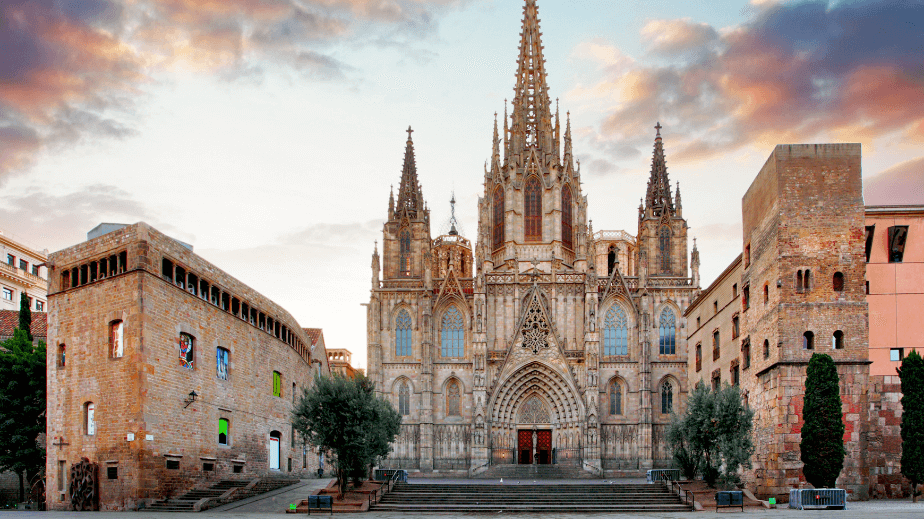
Although by far the largest church in Barcelona, the Sagrada Familia is not a cathedral. A cathedral is defined as the seat of the local bishop, and in Barcelona this honor is reserved for the Cathedral of the Holy Cross and Saint Eulalia, located in the Gothic quarter of the city. The spectacular cathedral was constructed during the 13th-15th centuries, and is a must visit on any tour of Barcelona's Gothic quarter . The cathedral's beautiful Gothic cloister is home to 13 white geese, a reference to the age of Saint Eulalia when she was martyred by the local Roman administration in antiquity, gruesomely rolled down a hill in a barrel of knives.
We hope you enjoyed our countdown of 10 things you need to know about the Sagrada Familia! If you're planning a visit to Barcelona then make sure to book one of our specialist Gaudí tours , where you'll get to visit the Sagrada Familia and other masterpieces by the great artist in the company of a local expert.

